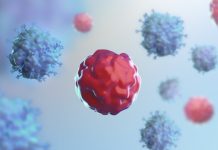
Biologists at the University of California, Los Angeles (UCLA) have uncovered thousands of four- and five-drug combinations of antibiotics that are surprisingly effective.
The discovery of 8,000 new combinations of antibiotics undermines the previously held belief that combining more than two drugs to fight harmful bacteria would yield diminishing returns.
Scientists had thought that the incremental benefits of combining three or more drugs would be too small to matter, or that the interactions among the drugs would cause their benefits to cancel one another out.
The new findings could prove crucial in protecting public health against the ever-growing threat of antibiotic resistance.
“There is a tradition of using just one drug, maybe two,” said Pamela Yeh, one of the study’s senior authors and a UCLA assistant professor of ecology and evolutionary biology. “We’re offering an alternative that looks very promising.
“We shouldn’t limit ourselves to just single drugs or two-drug combinations in our medical toolbox. We expect several of these combinations, or more, will work much better than existing antibiotics.”
How did the biologists arrive at this discovery?
The UCLA biologists analysed the effectiveness of every possible four- and five-drug combination of eight antibiotics against E. coli – a total of 18,278 combinations in all.
The results were surprising: 1,676 of the four-drug combinations and 6,443 of the five-drug combinations performed better than expected.
Meanwhile, 2,331 four-drug combinations and 5,199 five-drug combinations did not fare as well as the researchers had predicted.
“I was blown away by how many effective combinations there are as we increased the number of drugs,” said Van Savage, the study’s other senior author and a UCLA professor of ecology and evolutionary biology and of biomathematics. “People may think they know how drug combinations will interact, but they really don’t.”
Some of the new combinations of antibiotics were effective at least in part because individual medications have different ways of targeting E. coli. The eight tested by the UCLA biologists work in six unique ways – for instance, some attack the cell walls while others attack the DNA inside.
“It’s like attacking a castle or fortress. Combining different methods of attacking may be more effective than just a single approach,” Savage explained.
What happens next?
Despite these promising results, the new combinations of antibiotics are yet to be tested outside of a laboratory setting. It will likely take years before they can be evaluated as possible treatments in humans.
“With the spectre of antibiotic resistance threatening to turn back healthcare to the pre-antibiotic era, the ability to more judiciously use combinations of existing antibiotics that singly are losing potency is welcome,” said Michael Kurilla, director of the Division of Clinical Innovation at the National Institutes of Health/National Center for Advancing Translational Science.
He added: “This work will accelerate the testing in humans of promising antibiotic combinations for bacterial infections that we are ill-equipped to deal with today.”
The biologists are now creating open-access software based on their work in the hopes of making it available to other scientists next year. The software will enable other researchers to analyse the different combinations of antibiotics studied and to input data from their own tests of drug combinations.
This research was published in the journal npj Systems Biology and Applications.








